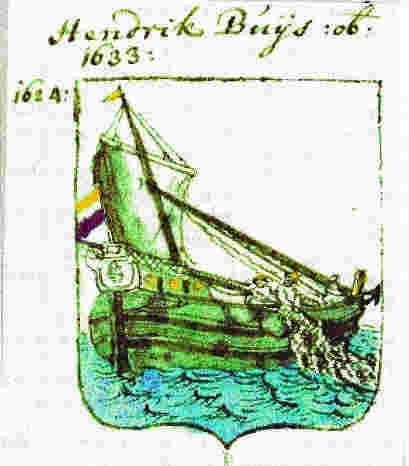FROM HOLLAND
TO
FORSYTH COUNTY GEORGIA


Presented at the Buice Family Reunion
Sharon Baptist Church
Forsyth County, Georgia
September, 1989
Dedicated to Clarence "Jack" Buice
September 1907-July1989
my cousin my friend
Author:
Chyrene "Sam" Buis Barnes
Reprinted with Authors permission
for buicefamilyreunion.com
Holland was the motherland of our Buis/Buice/Bise/Buys/Buijs ancestors. They lived in the town
of Brielle, (Den Briel in Dutch). Brielle is about 13 miles west of rotterdam on the
northeast coast of Voorne Island. Originally a fortress town, it protected the mouth of the
Brielsche Maas River.
Click Here to view map of Brielle, Holland
You may have to click two or three times
on your back button to get
back here
During the reign of Charles of the Netherlands, about 1520, Holland was under the rule of Spain.
The year 1566 saw the beginning of anti-catholic, anti-Spanish movements. City after city
renounced its allegiance to Spain during 1572 to 1573 with Brielle being the first town taken
from the Spaniards in 1572.
There has been something special about the Dutch since the dawn of history. There had to be.
Who else would have chosen to live in a vast swamp by the edge of a steadily encroaching sea?
Who else would have had the courage and determination to eke out a precarious existence on the
fringe of Europe where land merged into water? The Dutch have an old saying that "God made
heaven and earth, but Holland is the work of man."
The same person could appear under different names, as with occupation names or locality names. Arent of Long Island could be Arent Willemsen showing that his father was Willem -or Arent de Ramaacker showing his occupation as a wheelmaker -or Arent Oostrander showing he came from the east bank, (of somewhere). Also, we have the occasional use of an alias, generally for inheritance situation. Use of an alias was not all uncommon and did not mean the person was hiding from the law, although one never really rules anything out. The word alias with another surname was used where a man added his mothers surname or the name of some benefactor. The mothers or even in some cases the wife's surname would be added to his where she was an heiress.
We have an ancestor with an alias ---Jan Cornelis Buys, generation III.
Once the English people in America demanded that members of the same family use the same last name, these "frozen" surnames could be one of the above mentioned or a combination of the naming systems. Or, in a good number of cases, a surname was chosen that seemed to have no relationship to what is known of the family. Hopefully all members of a family would ultimately wind up with the same surname. This was the exception instead of the rule.
It has been said that tracing Dutch familes of this period "is like trying to pick up mercury with your fingers."
NEXT PAGE/HOME